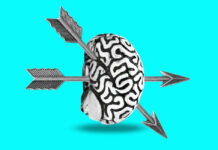A new study published in Administration and Policy in Mental Health and Mental Health Services Research explores the two-way relationship between debt and common mental disorders (CMDs). On examining Netherlands’ adult population, the authors found the more difficult a debt was to pay off, the higher the likelihood of onset of CMDs.
The study was led by Margreet Ten Have of The Netherland Institute of Mental Health and Addiction. The authors write:
“Increasing levels of difficulty in repaying debts predicted onset of CMD at follow-up in those without 12-month CMD at baseline and persistence of CMD at follow-up in those with 12-month CMD at baseline.”
They insist that to help patients with appropriate interventions, mental health professionals and debt counselors should pay attention to patients’ mental health status and debt.
 Recent research has repeatedly shown that there is a strong relationship between structural determinants and mental health. Several factors are associated with either initiating or worsening psychological distress.
Recent research has repeatedly shown that there is a strong relationship between structural determinants and mental health. Several factors are associated with either initiating or worsening psychological distress.
Prominent psychologists are beginning to see how poverty affects mental health, so much so that psychotherapy is not only inaccessible to the poor but also less effective for them. An older study from Sweden and a more recent one from Kenya found that financial help reduces mental distress more than brief psychotherapy.
Similarly, other structural determinants such as gender based-violence and racism can also significantly impact mental well-being. Repeated exposure to racism increases the chances of people reporting mental disorders. The export of Psy-disciplines through the Global Mental Health Movement has similarly been criticized for racist and colonial assumptions. Both socioeconomic status and race influence what diagnosis a person receives when they see a mental health professional.
Debt is a huge structural determinant that unequally burdens the less privileged. Thus, this study comes when increasing attention is being paid to external factors behind “mental illness.” The authors note that there has been increasing income inequality in the last few decades, and a significant number of people face difficulties in paying off their debts.
The current study examines the bi-directional relationship between CMDs and debt in the Netherlands. Data was gathered from the Netherlands Mental Health Survey and Incidence Study-2. Adults between 18-64 were first interviewed (T0) between 2007 to 2009. The first follow-up was conducted 3 years later (T1), and then a second follow-up another three years later (T2). For this study, only data from T1 and T2 about both debt and common mental disorders (CMDs) was used.
Respondents were asked about debts they incurred in the last 12 months, such as rent, mortgage, utilities, tax, loans, credit card payments, and mail-order payments. They were also asked how difficult it was to repay that debt and were eventually sorted into 4 groups: no debts, easy to pay back, difficult to pay back, and very difficult to pay back debts.
They were then asked whether, in the last 12 months before the interview, they met any of the criteria for CMDs (mood disorders, anxiety disorders, substance abuse).
Statistical analyses were used to find whether difficulty in paying one’s debt at T1 (compared to no debt at T1) predicted the beginning or continuation of CMD at T2. Similarly, they studied whether being diagnosed with a CMD at T1 (compared to no CMD at T1) predicted onset or continuation of difficulty in paying back debt at T2, which was the second follow-up. They found:
“Of the sub-cohort of respondents without a 12-month CMD at baseline, 10.9% had debts, and 4.3% experienced difficulty in paying back their debts. At follow-up, 9.0% of this sub-cohort developed a 12-month CMD.”
In other words, many participants who at T1 were having difficulty with debt but had no CMD had developed a CMD by T2, which was three years later. Moreover, the authors note that as the difficulty of repaying debt increased, the chances of onset of a CMD three years later also increased; people with the hardest time repaying debt had a 3-5 times higher chance of developing CMD.
Not only onset but the persistence or continuation of CMDs was also predicted by the level of difficulty in repaying debt. Similar studies have shown that educational debt has a significant impact on the mental health of students.
The relationship was partly bi-directional. The authors write:
“10.9% had a 12-month CMD. At 3-year follow-up, 8.2% of this sub-cohort developed debts; 4.7% reported the debts were easy to pay off, and 3.5% that they were (very) difficult to pay off.”
The authors note that having a CMD was not associated with the onset of new debts, but it was associated with making existing debts difficult to pay. The persistence of debt between T1 and T2 was better predicted by a mood or an anxiety disorder, but not a substance abuse disorder.
The authors write that these results strengthen the social causation hypothesis of mental disorders instead of the social selection hypothesis. They note that numerous factors could account for why debt predicts poor mental health; these include sleep disturbance, the stigma of debt and mental illness, stress, worrying about failures, poor health-related behaviors, weakened immune system, feeling lack of control, etc.
Given that general practitioners (GPs) are usually first to see people with CMDs, they must be aware of this relation between financial debt and mental health to guide them towards appropriate interventions. This might include guiding some patients towards debt counseling. The authors write:
“… there are recommended actions a psychiatrist could take, including discussing debts and budgeting, providing strategies to cope with pressure from creditors and anxiety, shame, and stigma, to face fears, and assess mental capacity to make financial decisions, raise awareness of personal strengths and weaknesses (e.g., impulse control), and discuss personal goal setting (e.g., daily routines and exercise), which may all help reduce debts and related stress.”
Their recommendations are in line with criticisms that have accused the medical community of medicalizing poverty and ignoring how systemic factors such as economic recessions can lead to unemployment, debt, and uncertainty and contribute to mental health problems.
****
Ten Have, M., Tuithof, M., Van Dorsselaer, S., De Beurs, D., Jeronimus, B., De Jonge, P., & De Graaf, R. (2021). The Bidirectional Relationship Between Debts and Common Mental Disorders: Results of a longitudinal Population-Based Study. Administration and Policy in Mental Health and Mental Health Services Research, 1-11. (Link)















“Both socioeconomic status and race influence what diagnosis a person receives when they see a mental health professional.”
Very true, which is part of why I’ve tried to help educate the black community, where I live, about the scientific fraud of the psychiatric DSM, and the common adverse effects of the psych drugs.
But I will say, I do have written proof in my medical records, that a psychiatrist (whose partner in crime was convicted by the FBI) did illegally access my income information. And made the incorrect assumption that an artist working on her portfolio, who was also a very active volunteer and mother trying to properly raise two young children, who had already paid off her half of her family’s home, was nothing more than “unemployed.” And I guarantee you, I would never have told that psychiatrist that I was “unemployed.” Since I was a self employed, fiscally responsible, mother, active volunteer, and artist working for future profits.
Plus I also have legal proof that a psychologist, who knew something about art, and thought my work might be of value some day, since he called me a “Chicago Chagall.” He attempted to steal all profits from my work, my work, my story, and all my money, via a classic thievery contract, which he deceptively called an “art manager” contract. Of course I did not sign that thievery contract.
But absolutely, there is a huge problem with the medical community, especially the psychiatric and psychological communities, misjudging people based on partial, illegally gotten, financial information; and outright attempting to steal from people.
There is also a huge problem with the medical community utilizing psychologists and psychiatrists to cover up their easily recognized malpractice, to proactively prevent legitimate malpractice suits. There is also a problem with lawyers not taking cases again psychiatrists who commit malpractice. Crimes, all of which, are forms of medical industry theft, not just from one person, but from all of society as well.
And make no mistake, when an unethical and incompetent doctor utilizes psychiatrists to cover up his “bad fix” on one person’s broken ankle. That incompetent doctor will go on to murder another person with an ankle problem, this actually happened.
So the psychological and psychiatric professions really need to stop covering up the mainstream incompetent doctors’ malpractice, and allow the patients to sue the incompetent doctors instead.
Report comment
If you owe the bank $10,000, YOU have a problem. If you owe the bank $10,000,000, the BANK has a problem.
Report comment
Adolescents who resided in cities were previously found to have biological stress reactivity, which was measured as the difference between cortisol concentrations https://easyqualifymoney.com/cash-loans-wired-in-1-hour.php and cortisol concentrations. and heart rate during rest and stress, as well as being more likely to suffer depression symptoms, particularly females.
Report comment
But wait, I thought it was all biological and genetic! You mean what KIND of life you’re living affects your emotional well being? Gosh, who would have GUESSED?
Report comment
The research may be missing the point, inherent to the flow of words or numbers. All of which can become entangled, while trying to create meaning. More importantly, the nature of making markets, and the importance of the interest rates for different levels of borrowing can be difficult for any client or counselor to understand. Being that every professional seems to feed on the darkest moment of one’s live, as if the Temple will be collapsed forever. To sort through the ruble of our lives when they were stinking within and outside of ourselves, can require some intervention. When one is in poverty or being forced into thea position for lack of being able to trade knowledge being created about a strange engagement with self, then at what point can one realize the reality of being a viable business? In the time period the studies were checking on the situation 3 years later? Let’s be real for a change can happen in the Twinkling of the ……
Report comment
Another of those weird “Medicalized” headlines. Why not just say, “Financial debt is depressing and anxiety-provoking?” Why the resort to “mental health outcomes,” as if getting upset about financial problems is some sort of disease or “disorder” or failing of the person in debt? Why not just admit that being in debt sucks?
Report comment
When ATAK/MI was faced with writing our plan, the the work had been accomplished in the era of “outcomes proposal writing, then the professional than came in and bashed the effort. Speaking the language inter and intra organization is not as rich as the way we begin to discern and attempt to make sense of the medicalizing of our lives. The structure is not in place to afford gradual healing, nor fianancing interest rates on funds borrowed or in time currency (See Edgar Kahn’s work on timeshare), where we begin to volunteer our time. Your last questoin Steve reminds me of Shakespeare’s quote ? , “Neither a Borrower nor Lender be”. Would the quote in our reality be more accurate if there were some disctinction between being and becoming?
Report comment
I think J Paul Getty said the above.
Report comment
Have you ever priced the cost of especially the newest psych drugs? Even if they are partly covered by insurance, they can put you into debt. So, I guess, it’s kind of like this: Your in debt; You’re distressed: You seek psych help: They prescribe you drugs plus the the therapy hour cost (which is usually just 45 minutes at best); then you’re more into debt; more distressed, blah, blah, blah, and etc. etc. etc. A vicious cycle has begun that only can be described as a “modern day debtor’s prison” without the bars. Unless, . . . And, then with psychiatric incarceration, forced one or the other. The story goes down hill further. . . Thank you.
Report comment
The reason I mention the high cost of these drugs is that when I was prescribed Abilify, it was about $400.00 to $500.00 per month. Some years later, I was prescribed the very controversial drug, Saffris. The price was very similiar, leading towards the higher amount. Neither my mother nor I could afford the cost. That probably helped to save my life. Thank you.
Report comment
Thanks for this article. It was helpful to read.
Report comment
Positive thinking will let you do everything better than negative thinking will.
Report comment
Adolescents who lived in urban areas were reported previously to have biological stress reactivity, expressed as the difference between cortisol concentration https://triceloans.com/instant-direct-deposit-loans/ and heart rate during rest and during stress, and were more likely to have symptoms of depression, especially females.
Report comment
Thanks for article
Report comment
Adolescents who lived in urban areas were reported previously to have biological stress reactivity, expressed as the difference between cortisol concentration and heart rate during rest and during stress, and were more likely to have symptoms of depression, especially females.
Report comment